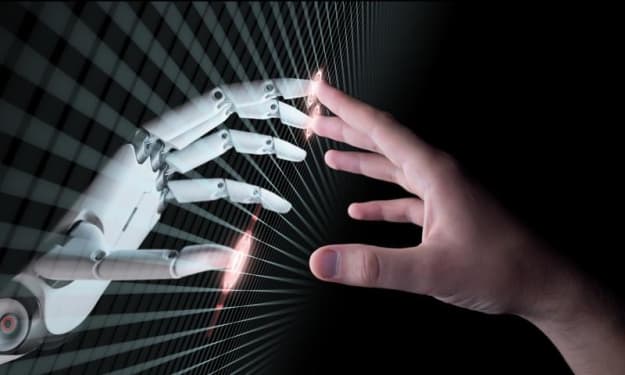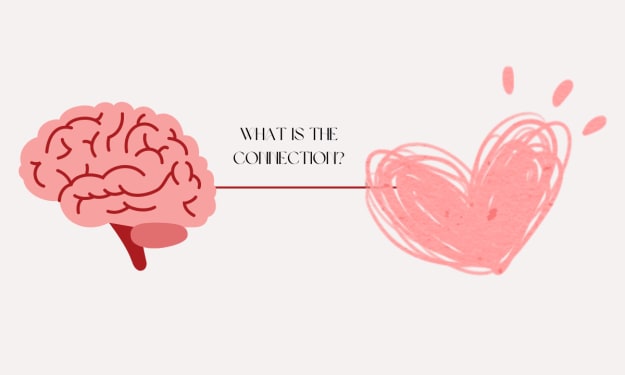Secret to Happiness
Psychologically proven enhancement of happiness from our purchasing choices

Abstract:
This study analyzes the happiness people received from either experiential or material purchases. More specifically, the study delved into explaining what factors influence higher happiness levels for experimental or material purchases. In the studies conducted, a Google form was sent to 4 advisories where the participants rated their happiness out of 5 for recent materialistic and experiential they had purchased. The respondents had to inform of their gender in order to compare results based on demographics. The second survey asked the respondents to explain why they received more happiness from either purchase. According to our results, people received more happiness from experiential purchases over material purchases, which was supported by many statements from the respondents claiming it increased social development, self-actualization, and positive reflection on their experiences. In the study, females rated their experiential purchases higher than males, yet 9th graders, on average, valued their recent material purchases more than 12th graders. The sample of subjects was small-scale and consisted of only SAS students, so it can not be generalized to larger populations. Nonetheless, the results deduced that experiential purchases offer more positive reinterpretation and development of social development, generating more happiness compared to materialistic goods.
Introduction:
Everybody has the right to life, liberty, and the pursuit of happiness. However, the word “pursuit” distinguishes how our strive for happiness doesn’t necessarily guarantee happiness. Our decisions dictate the satisfaction gained from our said choices.
However, is it possible to know the optimal decisions that ensure maximum satisfaction gained? According to Simon’s theory of bounded rationality, people’s cognitive and data limits restrict them from knowing the fully rational and most-beneficial choices. People simply don’t have the time to assess all outcomes to every decision in their daily lives, therefore, irrationality is inevitable when decision making. This theory applies to our study and can inform people about the most probable way of achieving happiness through consumer choices. Studies have concluded that people receive more happiness from purchasing experiences rather than materialistic goods (Van Boven). However, demographics do play a key role in people’s purchases and how it impacts their happiness. Wealthier individuals tend to favor experiences more than material goods because they can afford many material goods, which don’t continually stimulate much happiness over time. However, poorer individuals don’t receive the benefits of experiences as much as their affluent counterparts since they allocate their limited money toward purchasing basic needs. More educated and wealthier people tend to obtain more self-actualization as well, which attribute to higher psychological satisfaction from experiences.
The term, self-actualization, means the goal of an individual to reach their full potential and ideal self. Our self-concept is largely derived from our memories, episodic and semantic.
Self-actualization is the top pyramid within Maslow's Hierarchy of Needs, above the lower levels: basic needs, Safety needs, belongingness and love needs, and esteem. These levels of personal fulfillment can inform people of their level of happiness and contentment. Experiences instill new perspectives, inspiration, and psychological vitality within a person, which thereby largely contribute to the different levels of needs, especially self-actualization (Self-Actualization). With our experiences molding our self-concept, people receive more happiness by reflecting on these experiences with positive reinterpretation over time.
Habitation is fundamental vocabulary in this study, it is when people “come back down to earth” from a period of happiness (Weiten, 2016). After purchasing a material good, happiness can be maintained only for so long until its positive impact fades. However, experiences allow people to positively reinterpret them which increases the habituation period for individuals.
In a study by the McCombs School of Business at The University of Texas, Amit Kumar, Matthew Killingsworth from the University of Pennsylvania, and Thomas Gilovich from Cornell University, randomly assigned 2,635 adults to a group experience or material group. Over the course of a day, each subject had to send text messages to monitor their happiness after purchasing material goods or experiences. The results concluded that people received more happiness from experiences regardless of the cost of a material good (Spending). This study reiterates how the durability of memories from experience becomes more valuable to an individual over time; however, material goods weaken in value.
In another study, a national survey with 12,000 American participants was overseen by Harris Interactive on behalf of Northwestern Mutual Financial Network. The participants were questioned on whether they believed material possessions or experience could make them happier. The results deduced that experience outweighed material goods by a great margin, due to the substantial worth experience provides for people. Experiences foster relationships and allow an individual to engage in social development. Our innate tendency to positively reinterpret experiences enables people to engage in more successful social interactions (Experiences Make).
In a study by Travis J Cater and Thomas Gilovich, 60 Cornell students were asked to reflect on a significant experience or material purchase. They were asked, if they could, would they would choose to go back in time and trade their memories of material or experiences purchases for any other possible item or experience (Gilovich, Thomas). People were more willing to exchange material possessions because experiences were affiliated with their self-concept, which holds significant value to participants. It was claimed by subjects that trading experiential memories would alter their identity and cause distort their idea of self-actualization.
In a 2016 study, many UK citizens' bank account purchases were recorded over the span of 6 months. Purchases were sorted into one of 59 categories, and each participant received a Big Five personality score from a quiz. The results concluded that people reported more happiness from the purchases that coincide with their personalities, for example, more passionate people invested more in charities, etc (Six Ways). Our demographics and personality traits play a role in deciding the satisfaction received from the purchase. Introverts and extroverts also generate different happiness levels for specific experiences or purchases, therefore, experiences tend to be less favored for introverts depending on how hyper the environment is.
Aim and Operational hypothesis
By examining the demographics of different students and their happiness ratings from experiential or material goods, the aim of the study are to deduce which purchase category provides the most happiness to an individual, as well as positive reinforcement to people’s lives. This study will test the hypothesis that younger students would prefer material goods more than older students; however, overall, students will claim that experiences granted them more happiness.
Methods:
Study design:
The first study sent a survey to 4 advisories, 2 advisories from 9th and 12th grade, which were randomly selected from a random generator. The survey consisted of a series of questions about recent materialistic and experiential purchases they made. Also, there was a gender question (there is an option to not say), which was used to see if demographics affect people’s happiness received from purchases in the sample.
In the second study, another survey was sent out to the 2 advisories from both 9th and 12 grades (same as the first study), asking them to write out an explanation as to why they received more happiness from either the materialistic or experiential purchase they ranked higher.
Participants:
The sample group included 2 advisories from both 9th and 12th grade. The advisory groups were selected from an online randomization generator. For this study, advisory groups were the ideal candidates because advisories are excellent examples of cluster samples, which constitute different students with diverse demographics. Nonetheless, the female-to-male ratio in advisories is relatively equal. This study is based on a subjective survey, therefore, a control group wouldn't be plausible since there couldn’t have been a baseline subjective opinion on material or experiential purchases to compare results with. A consent form was shared with all participants, which they had to read and agree with to continue with our survey.
Materials:
In the study, the following materials were utilized: two student surveys (see appendix A and B), a study description video (see Appendix C), a laptop, and an online random generator.
Procedure:
To randomly select the 4 advisories, all the names of 9th and 12th grader advisories were put into an online randomization generator, where 4 names were produced (2 from the 9th and 12th grades). Afterward, an email was sent to the advisories with a project-explanation video and the first survey attached. The students answered the survey question on the google form after consenting to the consent form. In the survey, the respondents noted down a recent experiential and material purchase they had made. Following this, they rated their happiness from 1 to 5 (1 being sad and 5 being very happy) from each of these purchases. Then, all the data was gathered from the surveys, while taking into account the students’ demographics of sex and grade level to assess if there are any correlations.
In the next study, a video was sent out a few days after the first survey to the same 2 advisories from both 9 and 12 grades. The survey asked the students to write a description of why they chose a material good or experience which gave them more happiness. The written explanations for why the respondents selected the purchases were evaluated for any consistent reasoning and trends which incited more happiness for the group.
Discussion:
After examining the collected data, the initial hypothesis which predicted that 9th graders would rate their happiness from material goods higher than 12th graders, but both would rate experiential purchases higher than material goods was supported. This is because the margin between average happiness ratings between materialistic and experiential purchases for 9th graders is around 7 times smaller than for 12th graders. In table 1, the average rating for experiential purchase ratings, 4.27, was slightly higher than the material purchase rating, 4.18. Therefore, it is evident that the 9th graders received more happiness from material goods, yet they still rated experiential purchases higher. For 12th graders, the average happiness rating from material purchases, 3.81, was lower than experiential purchases, 4.45. There was 1 12th grader who rated their material purchase as a 2-out-of-5 rating, whilst experiential purchases were rarely rated below a 4, only in once it was rated a 3. These results conclude that 12th graders averagely obtained more happiness from their experiential purchases compared to material purchases. As for the gender study, although there was a combined total of 9 people within the ‘tie’ category, more females rated that they received more happiness from experiential purchases than males. Looking at the overall results, it was expected that people would value their experiential purchases more significantly, especially judging by previous other studies. This discrepancy could be due to the fact that people listed recent experiential purchases that they hadn’t experienced yet. From the previous research conducted by Northwestern Mutual Financial Network, people gain happiness from being able to positively reinterpret their past experiences (Experiences Make). Without experiencing the purchases yet, people don’t possess the long-lasting habituation granted from past events; therefore, students could not have received much happiness from their experiential purchases. On a side note, an unexpected result from this study was how some students rated their experiential purchases, which are believed to be incredibly fun, quite low. For example, a respondent rated the material purchase of a jersey higher than their experience on Halloween horror night. In another case, a person rated the material purchase of a bracelet higher than purchasing a ticket to go to Universal Studios. In the 2016 survey findings, it was found that people's personalities play a major role in influencing our perceived happiness from experiences (Six Ways). For example, introverted people or persons with varying interests may favor experiences that don’t involve bustling environments. Therefore, people can receive varying happiness levels from experiences that can be overtaken by material purchases, which can be seen in this study, if it corresponds with their personal preferences more.
As mentioned above, a confounding variable could be the fact that people note down the most recent experiential purchases that they had experienced yet. For example, some respondents wrote interim tickets, but the interim won’t commence for another few months. Without living through the experiences which were ‘purchased’, people won’t have the capacity to positively reinterpret the events which is a key reason why previous experiences stimulate ample happiness for a person. Therefore, that could explain why material goods and experiential goods were rated fairly equal or less than in some cases in this study. Another possible confounding variable could be the mental state or moods of the respondents at the time of taking the survey. Since the respondents' outlook could influence their material or experiential preferences. For example, if they were feeling particularly cold at that moment they could appreciate the materialistic good of a hoodie more, which was one of our responses. Material goods can provide us with comfort or a tool for experience in that given moment. Preluding to one of our limitations of what exactly classifies as an experiential or materialistic good.
Another limitation of our study is what classifies a purchase as a material possession or experience. An iPad or bicycle, for example, are vehicles for experience and social activities, which confuses the borders in which category people gain happiness from. The reliability of knowing what level of experience was gained from specific purchases is quite untelling. Nonetheless, a way of overcoming this limitation was to simply categorize material goods as physical objects or accessories, and categorize experience as tickets to an event or for transportation. Another limitation could be the wealth status of the respondent. In the “To Do or to Have?” a research article explained how poorer individuals don’t receive the benefits of experiences as much as their affluent counterparts since they allocate their limited money toward purchasing basic needs (Van Boven). However, although students in SAS predominantly don’t have money struggles, the students aren’t independently financing their expenditures, and are constrained by their parent’s allowances or pocket money. Therefore, they could value material goods higher when they have saved up to purchase specific materialistic goods. A possible way to overcome this limitation is to gather a group of respondents who have similar wealth status so that the results aren’t a product of their different financial situations.
In a world dictated by consumer choices, people constantly strive to maximize their satisfaction through purchases and ‘smart decisions.’ However, the biggest goal people devote themselves to is being happy. According to various research and this study, purchasing experience that enriches people's self-actualization, positive reinterpretation of events, and social development grants more happiness to an individual than material purchases. However, this study’s sample group consists of financially sound SAS students that can't be generalized to larger populations. Another branch of study for this research topic could be how different functioning brains interpret past events. More specifically, people with different personalities or psychological conditions, like anxiety, OCD, etc, can interpret their past experiences differently and are not always very positive. Therefore, studying how different people view their past experiences could be an interesting avenue of study on this topic.
References
Self-Actualization: Maslow's Hierarchy of Needs. (2020). Retrieved 8 November 2022, from https://www.interaction-design.org/literature/article/self-actualization-maslow-s-hierarchy-of-needs
Spending on Experiences Versus Possessions Advances More Immediate Happiness - UT News. (2020). Retrieved 8 November 2022, from https://news.utexas.edu/2020/03/09/spending-on-experiences-versus-possessions-advances-more-immediate-happiness/#:~:text=The%20researchers%20concluded%20that%20people,time%20using%20their%20material%20possessions.
Experiences Make People Happier Than Material Goods, Says CU Prof. (2003). Retrieved 8 November 2022, from https://www.colorado.edu/today/2003/12/09/experiences-make-people-happier-material-goods-says-cu-prof
Six Ways to Get More Happiness for Your Money. (2022). Retrieved 9 November 2022, from https://greatergood.berkeley.edu/article/item/six_ways_to_get_more_happiness_for_your_money
Van Boven, L. and Gilovich, T. (2003) To Do or to Have? That Is the Question. Journal of Personality and Social Psychology, 85, 1193-1202. http://dx.doi.org/10.1037/0022-3514.85.6.1193
Gilovich, Thomas. “I Am What I Do, Not What I Have: The Differential Centrality of Experiential and Material Purchases to the Self.” Research Gate, 2012, https://www.researchgate.net/publication/221865290_I_am_what_I_do_not_what_I_have_The_differential_centrality_of_experiential_and_material_purchases_to_the_self. Accessed 9 Nov. 2022.
About the Creator
Maya Munasinghe
I share personal studies conducted on Psychology and many other stories that hopefully target your interest!! Check them out :)
Enjoyed the story? Support the Creator.
Subscribe for free to receive all their stories in your feed. You could also pledge your support or give them a one-off tip, letting them know you appreciate their work.






Comments
There are no comments for this story
Be the first to respond and start the conversation.